- Founder to Founder
- Posts
- The truth about launching a podcast in 2025
The truth about launching a podcast in 2025
I spent $13k generating 2.4k views for my podcast. Here’s everything I learned.
Hello and welcome to the first edition of the Founder to Founder newsletter!
Starting a newsletter in January might seem like my version of going to the gym but I promise this isn't a New Year's resolution 🙂
As a founder, I've always learned the most from my peers. Sometimes, all it takes is a text to another founder to get unblocked on a key problem or get another perspective.
But those group chats are often hidden behind the curtain—inaccessible to many founders.
I want to change that.
I always loved sharing what I’ve learned with others so this newsletter will do just that—share things I wish someone had told me while building OpenPhone.
For this first edition, let's talk about our podcast experiment. Last year we launched "Founder to Founder", made three episodes, then took a pause.
Many founder friends asked about it. What was the effort like? Was it worth it? Why did we stop?
Whether you've been thinking about doing a podcast or just got "nominated" for it, here are the lessons I learned so you can benefit from my mistakes.
Shall we?
📒 DEEP DIVE
The truth about launching a podcast in 2025
I spent $13k generating 2.4k views for my podcast. Here’s everything I learned.
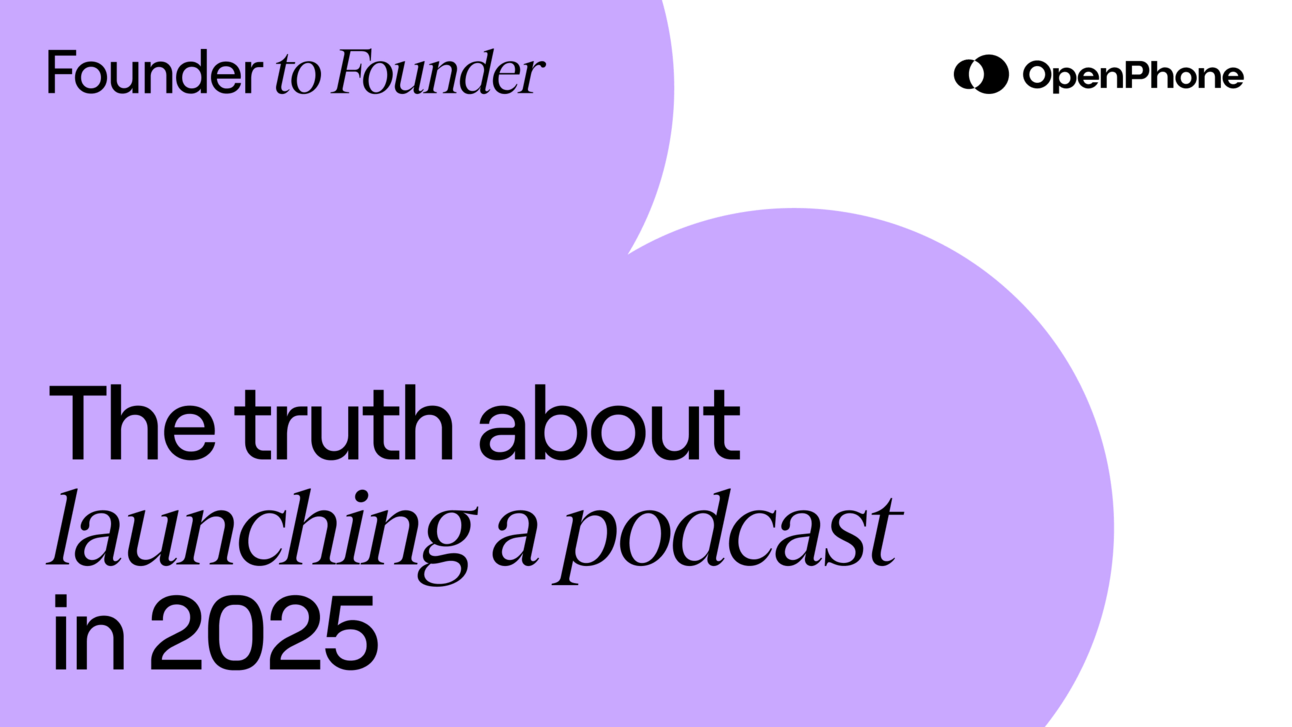
I don't remember the exact moment the idea to do a podcast came up—but it was likely in early April 2024 at one of our OpenPhone GTM leadership meetings.
We felt that it was time to start investing in the kind of content that would go beyond the confines of what a company building a business phone system would create.
One idea after the other, we settled on making a podcast with myself as the host.
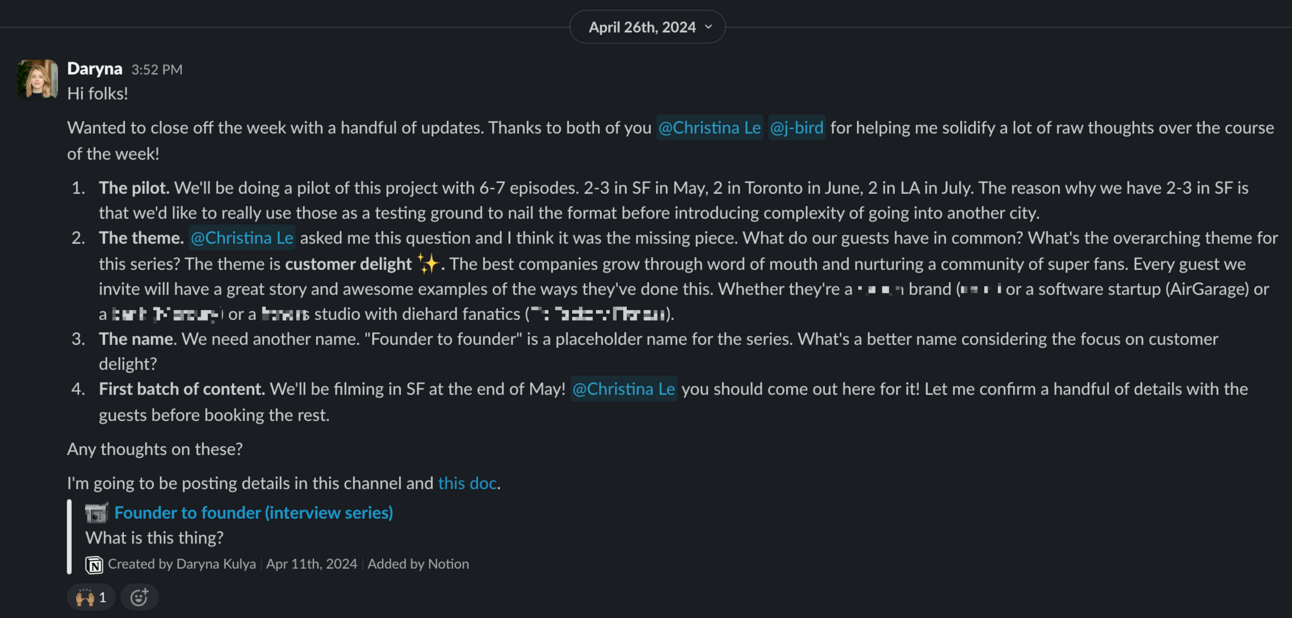
My kick-off post about the project
The concept was simple—I’d interview founders who have created a truly delightful product or service.
We’d dive into their story:
✨ How they landed their first customers
✨ The journey to creating something that truly resonated
✨ Not just their wins, but the lessons learned along the way
The goal was to show other founders a more real view of what it took to build and scale a company.
Why would OpenPhone do something like this?
We got asked this question a bunch. There are 2 parts:
→ Our main customer persona is a fellow founder/business owner.
So, creating something of value to founders means building value for our customers. Hopefully, this would translate into gaining awareness among those who aren’t using OpenPhone for their business yet.
→ We’ve historically done primarily direct response marketing at OpenPhone.
While we've invested in content, it's mainly been about our product and the specific problems we solve. But there are only so many people actively looking for a business phone system right now, and we're already reaching them well with our current content.
We decided it was time to go further up the funnel—to connect with people who aren't in the market yet and build brand awareness for the long term.
The 2 big decisions
There are a couple of key decisions we made as we got started.
1) In-person recording only (no Zoom interviews)
As a founder of a distributed company (and a new mom), I was craving an opportunity to get out of the house. I live in San Francisco and a lot of the guests I had in mind for early episodes were local. We even planned to do several episodes in other cities like Toronto and LA.
The other reason for this is that I wanted to put all setup and equipment in the hands of experts and allow myself (especially as a new interviewer) to focus entirely on the guests and the content of the show.
We wanted this to be a more candid conversation with founders and we thought that hosting these in person would help us be comfortable to go deep, so to speak.
I have since relaxed my own belief about in-person being the only way, but it’s still a personal preference.
2) Adding an “interactive component”
We decided from the beginning that we would try to have more than a sit-down interview with the guest.
Why?
I wanted to get as immersed in the interview as I could. Plus it would help me have better questions for the guests—I wanted to really experience the product/service that was presented in the show.
For example, I explored one of AirGarage's locations in SF, learned from Bobbie Co-Founder how to make a perfect bottle, and toured Wander’s beautiful listing in Santa Rosa.
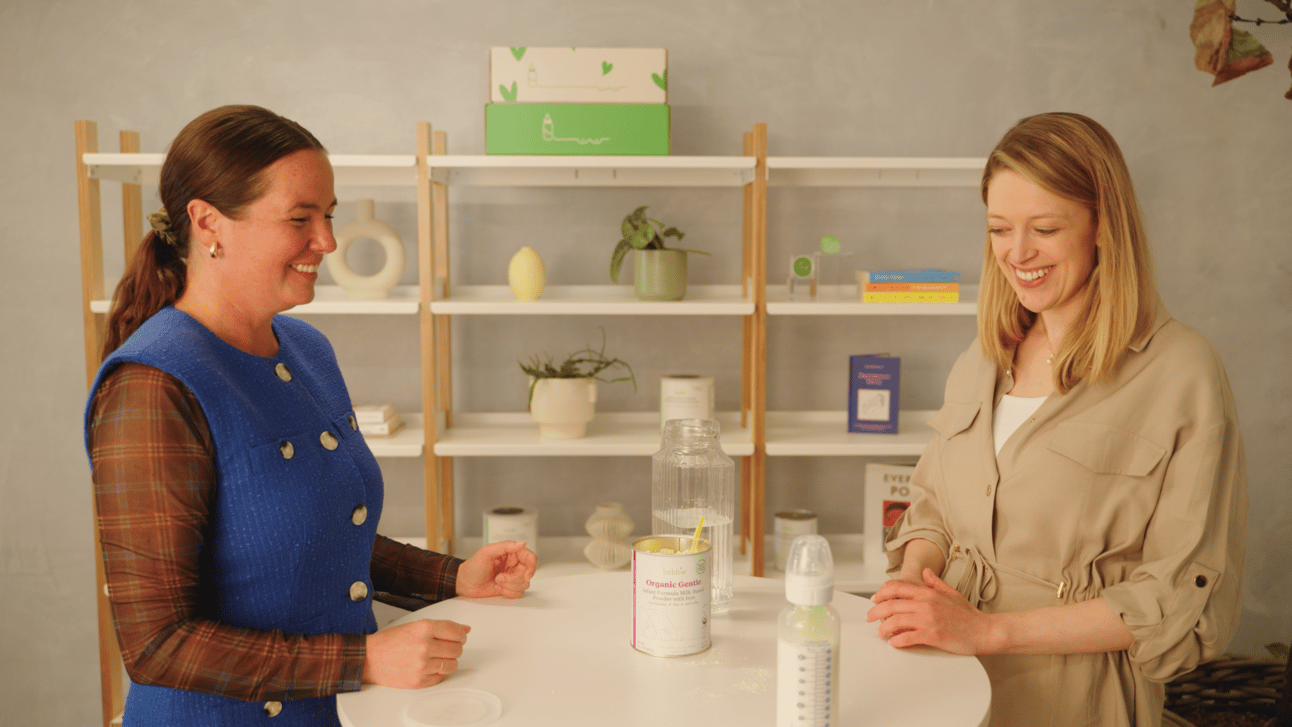
Learning how to make a formula bottle from Sarah Hardy, Co-Founder at Bobbie
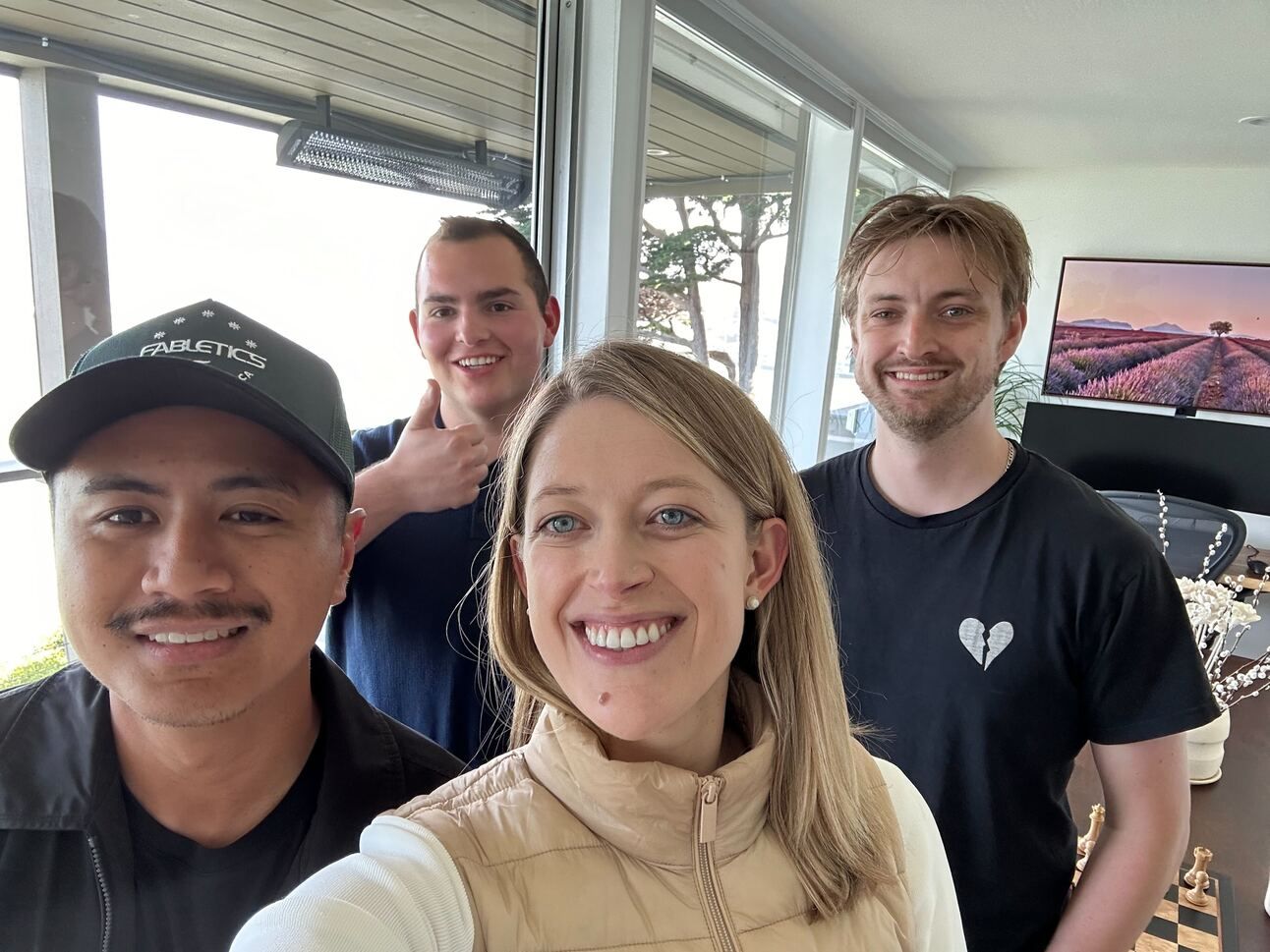
Behind-the-scenes filming with John-Andrew Entwistle, Founder of Wander
While these segments were fun, the truth is that they also took a lot of time, mental load, and additional effort.
What did it cost?
Everyone always wants to know how much it costs to do an in-person, video podcast. So let me share.
We spent $12,808 on 3 episodes. That’s ~$4,200 per episode.
What does this cost cover?
Most of the budget was spent on recording and post-production. Some of the smaller software expenses on top of this were:
What was the ROI?
We recorded three episodes of Founder to Founder with the founders of Wander, Bobbie, and AirGarage.
Collectively, the episodes got:
120k impressions on social
2.2k views on YouTube (4.4k views if I also count YouTube Shorts - distribution of Shorts really outperformed full episodes in some cases)
212 downloads on Spotify and Apple Podcasts
I also got nice notes from folks who watched and listened, which are always much more valuable than numbers on a dashboard.
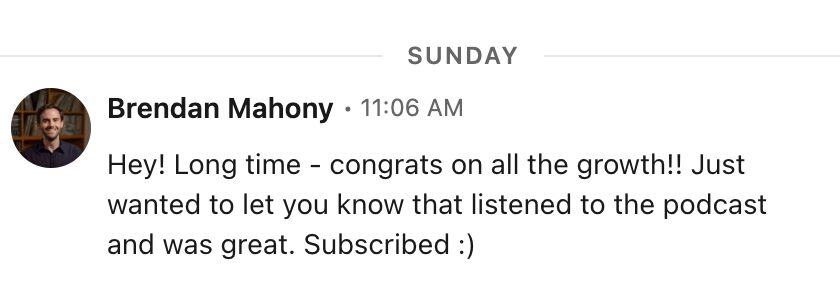 | 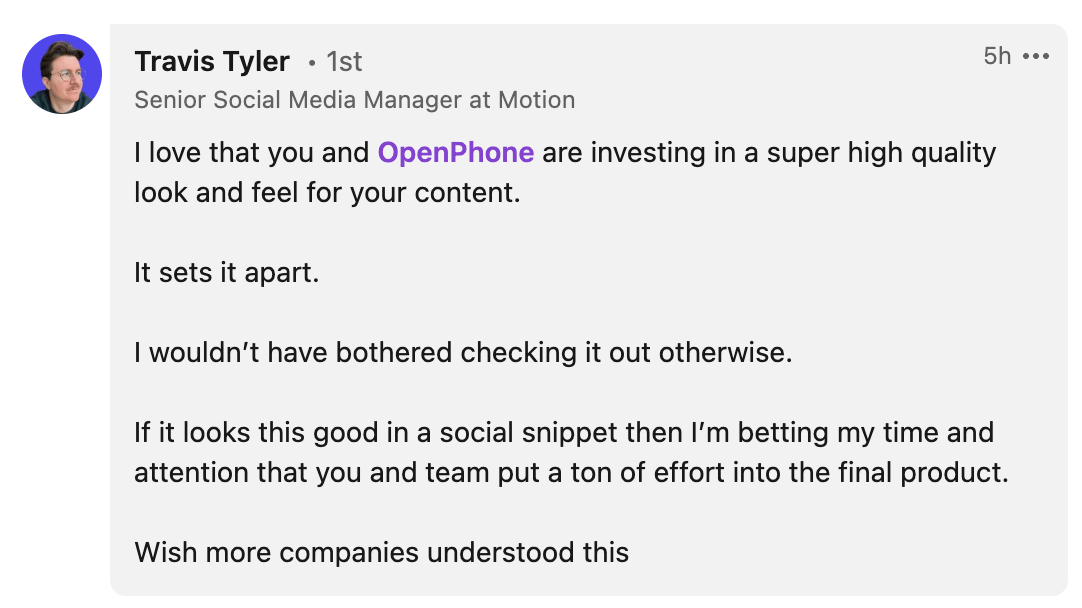 |
Doing this also got me a lot more comfortable with content creation and being in the guest seat, which is a win on its own.
As an example, I met and later joined Turner Novak’s “The Peel” through doing “Founder to Founder” which was an unexpected outcome.
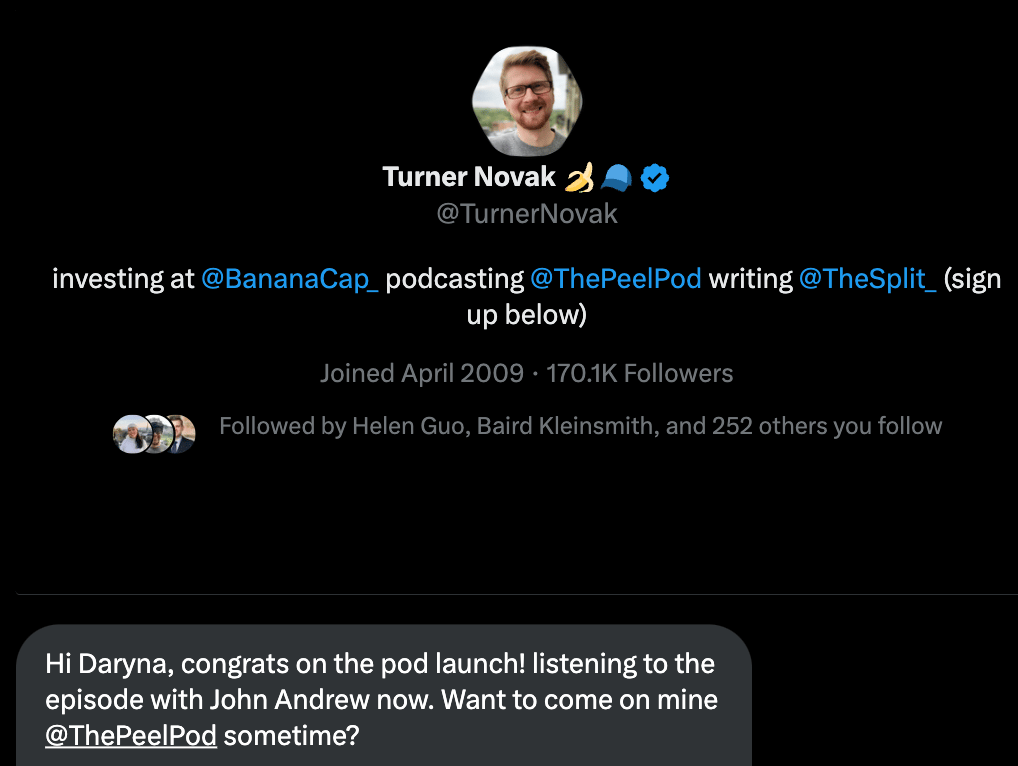
While I wanted to see higher numbers, I learned more from this project than I anticipated and got to meet some amazing founders through it.
Needless to say, when I’m joining a podcast as a guest now, I have a lot more knowledge and appreciation for the process happening behind the scenes and the hard work the host is doing.
Ok, so what do I wish I knew before entering into the podcast production process?
5 things I wish someone told me before we got started
1) Go narrow
Shortly after launching the podcast, I saw this tweet from Harry Stebbings and thought that he was wrong (but also was wondering if he was subtweeting me 😅).
3 episodes later I wholeheartedly agree with his take.
Finding a more narrow focus vs candid conversations with fellow founders would’ve been a helpful differentiator. Maybe it wouldn’t result in thousands of views right away but would put us on the path to getting there.
For those starting a podcast:
You have to really specialise.
Interviewing other founders is no where near being specialised enough. It will not work.
Interviewing fintech founders about regulation challenges. 100x better.
Find your 1,000 true fans. Crucial.
— Harry Stebbings (@HarryStebbings)
9:42 PM • Jul 3, 2024
Starting this podcast, I had unrealistic expectations for what initial traction would look like. A new podcast getting thousands of views / listens per episode right away is a very high bar to meet. Especially as you consider that any form of media is competing for precious time and attention.

Success metrics from our podcast kick-off Notion doc. Have to admire my confidence 🙂
2) Distributing your podcast is as much work as making it
“Build it and they’ll come” has no place when it comes to starting anything—but it’s especially true with podcasts.
Podcast platforms have close to zero discoverability. And YouTube takes time to pick up.
So you end up having to to a lot of leg work early on to get initial momentum. There are no shortcuts. And, you have to assume your guest won’t share it.
Micro-clipping for social can help solve this. People won’t always watch a 50-minute episode, but they will watch a compelling 30-second clip.
3) Being a great interviewer is a lot harder than it looks
The explosion of podcasts made us think that anyone can become the next Alex Cooper or Joe Rogan. But the truth is, there is so much more to being a great interviewer.
It requires many things I didn't expect:
→ A lot of prep (this one I was expecting)
→ Knowing how to guide your guest from an “ok” answer to an “amazing” answer.
→ Building rapport and trust
I’m sure it gets a lot easier with more practice but I didn’t anticipate how steep the learning curve is.
Btw, here is a great post by Melissa Rosenthal about what mastery looks like in podcasting featuring Sean Evans, the host of “Hot Ones” 🍗
4) If you’re creating content, make sure it’s in the format you love
One thing I confused is my love for consuming podcasts with my love for the process of creating each episode. 😅
It takes a lot more work than people think to go from an idea to a published episode and I found many parts of the process (in particular post-production) quite draining.
This was despite having a team to support content creation + leaning on AI tools.
In contrast, I love this newsletter format and am having so much fun writing this.
I'd recommend picking a content medium you can see yourself sticking to for a decade.
5) You’re your own worst critic
Nothing teaches you how to be ok with yourself faster than having to watch and listen to yourself in long-form video—over and over again. Try it 😉
Even though we’ve only done 3 episodes, I can actually listen and watch myself now which is the key to growth and development.
Unexpected perk of starting a podcast - you get so used to hearing your own voice that it no longer feels weird.
— Daryna Kulya (@darynakulya)
4:10 PM • Jul 5, 2024
What’s next
For now, the “Founder to Founder” podcast is on pause but there is a chance it’ll be back in some shape or form.
Brand investments take a lot longer to pay off than direct response marketing. I knew that going in but it takes much more effort and a differentiated strategy to get a podcast off the ground in 2025.
Until then, I’ll be sharing my lessons learned and stories in this newsletter. Like I mentioned earlier, writing is a content medium I genuinely enjoy.
And occasionally, I'll record a long-form video like this to keep those video content muscles working.
Is there something you’d love to hear from me about in an upcoming newsletter? Reply and let me know. I’d love to get your input.
Until then, take care 👋
Daryna
ps - thanks to JJ Tang for reading drafts of this